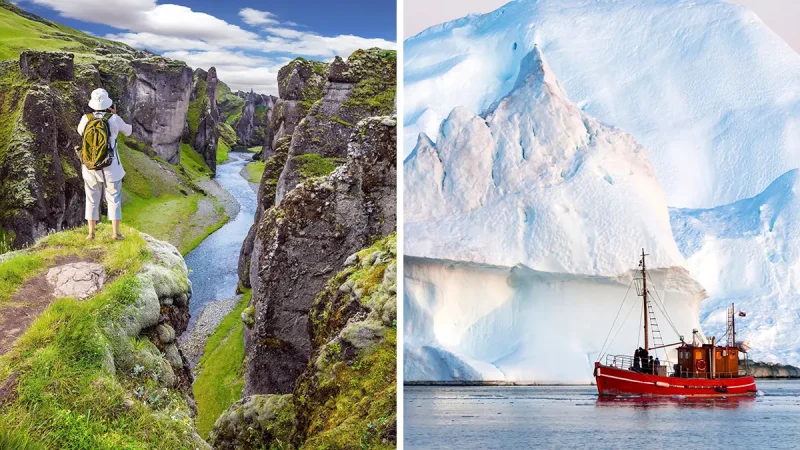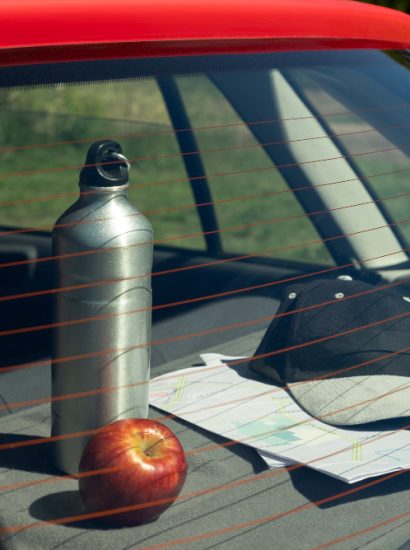When comparing Iceland vs Greenland, many people are often surprised by how different these two Arctic regions truly are. Despite their geographical proximity, they have distinct cultural, geographical, and environmental features that set them apart. In this article, we explore 10 key differences between Iceland and Greenland that will give you a deeper understanding of both places. Whether you’re planning a visit or just curious about these icy territories, this guide will provide valuable insights into what makes each one unique.
Geography: A Tale of Two Landscapes
The geography of Iceland vs Greenland is one of the most obvious differences. Iceland is a volcanic island, rich with geothermal activity, hot springs, and geysers. Its terrain is a patchwork of glaciers, mountains, and lava fields, offering diverse landscapes that change dramatically across the country. Greenland, on the other hand, is the world’s largest island, covered mostly by an expansive ice sheet. The land is largely barren, with only small coastal areas free from ice and snow. The contrasting landscapes of these two regions make them both awe-inspiring, though in very different ways.
Climate: From Subarctic to Arctic
Another major difference between Iceland vs Greenland is their climate. Iceland, due to its position in the North Atlantic Ocean, experiences a temperate maritime climate. The weather is generally milder, with cold winters and cool summers. While Iceland can be snowy, especially in the winter, its temperatures rarely drop too low. Greenland, in contrast, is located farther north and has a much colder climate, classified as Arctic. Most of the island is covered by an ice sheet, and temperatures can plunge far below freezing, particularly during the winter months. If you enjoy snow but prefer a more temperate setting, Iceland might be your ideal destination.
Population: A Sparse Contrast
When discussing Iceland vs Greenland, one of the more striking differences is population density. Iceland boasts a population of around 370,000 people, with the majority living in the capital, Reykjavik. This gives Iceland a bustling yet small-city feel, with vibrant communities and a rich cultural scene. Greenland, by contrast, has a population of only around 56,000 people, most of whom live in small, remote villages along the coastline. The vast majority of Greenland’s interior remains uninhabited due to its harsh climate and ice cover. The smaller population and isolation of Greenland make it feel much quieter and less populated than Iceland.
Flora and Fauna: A Stark Contrast in Wildlife
The flora and fauna of Iceland vs Greenland reveal another stark difference. Iceland is home to a variety of wildlife, including puffins, seals, reindeer, and a host of bird species. Due to its milder climate, the island also supports a range of plant life, including moss, birch trees, and wildflowers. Greenland, on the other hand, is far more barren. Its wildlife is limited to species that can thrive in the cold, such as polar bears, musk oxen, and arctic foxes. The limited vegetation includes hardy plants like mosses, lichens, and dwarf shrubs. If you’re an avid wildlife enthusiast, Iceland offers a more diverse range of animals and plants to explore.
Culture: Viking Legacy vs Inuit Heritage
Culturally, Iceland vs Greenland diverge significantly due to their different historical influences. Iceland has a rich Viking heritage, and its culture is deeply rooted in Norse traditions. Icelandic literature, including the famous sagas, plays a significant role in the national identity, and many Icelanders speak the ancient Icelandic language. Greenland’s culture is primarily Inuit, with strong ties to Native Arctic traditions. The Inuit people have lived in Greenland for thousands of years, and their customs, art, and language are still deeply ingrained in modern Greenlandic society. These cultural differences make both places fascinating for those interested in history and indigenous traditions.
Economy: Tourism and Resources
The economies of Iceland vs Greenland are also quite different. Iceland’s economy is heavily dependent on tourism, with its stunning landscapes, geothermal energy, and outdoor activities drawing millions of visitors each year. Fishing is another key industry, as well as renewable energy production. Greenland’s economy is largely dependent on natural resources, such as fishing, mining, and oil exploration. The tourism industry in Greenland is also growing, but it is nowhere near as developed as in Iceland. In both places, the economies are deeply influenced by their natural environments, but Iceland has a more diversified economy due to its larger population and developed infrastructure.
Language: Icelandic vs Greenlandic
The language spoken in Iceland vs Greenland is another notable difference. In Iceland, the national language is Icelandic, a North Germanic language that has remained largely unchanged for over a thousand years. This means Icelanders can read medieval texts in their original form. Greenlandic, the official language of Greenland, is a member of the Inuit-Aleut language family. It has several dialects and is known for its complex structure, with long words that can describe entire phrases. While Danish is also spoken in both countries, the primary languages represent different linguistic families, highlighting another layer of cultural divergence.
Tourism: Popular Destinations
Tourism in Iceland vs Greenland offers different experiences. Iceland is known for its well-established tourism industry, with visitors flocking to popular spots like the Blue Lagoon, Golden Circle, and the erupting volcanoes. Its infrastructure supports a thriving tourism sector, with accommodations, restaurants, and guided tours available across the country. Greenland, by contrast, offers a more off-the-beaten-path experience, with adventure-seekers drawn to the island’s rugged beauty, ice fjords, and Arctic wildlife. While Iceland has more amenities for tourists, Greenland provides a more remote and authentic wilderness experience.
Infrastructure: Developed vs Remote
In terms of infrastructure, Iceland vs Greenland differ significantly. Iceland boasts a well-developed infrastructure, with modern roads, airports, and public services. Reykjavik is a bustling capital with all the amenities of a European city, and the country is well-connected by road and ferry. Greenland, however, has limited infrastructure outside its main towns and settlements. There are no roads connecting the various towns, and travel between them is primarily by boat or small aircraft. This makes Greenland a much more challenging place to navigate, but also a more pristine and untouched destination for those seeking an adventure.
Political Status: Sovereign vs Autonomous
Finally, Iceland vs Greenland differ in their political status. Iceland is an independent republic, having gained its independence from Denmark in 1944. It has a stable government and is a member of various international organizations. Greenland, however, is an autonomous territory of Denmark. While Greenland has its own government and controls many internal affairs, it remains under the sovereignty of Denmark, especially when it comes to foreign policy and defense. This difference in political status plays a key role in how the two regions engage with the rest of the world.
Conclusion
In the debate of Iceland vs Greenland, it’s clear that while they share some geographical similarities, these two regions are worlds apart in many ways. From their landscapes and climates to their cultures and economies, each offers a unique experience. Iceland provides a more accessible, tourist-friendly destination with a rich cultural heritage and modern amenities. Greenland, on the other hand, offers an unparalleled sense of adventure and remoteness, with vast wilderness and a deep-rooted Inuit culture. Whether you prefer the convenience of Iceland or the wild allure of Greenland, both places offer jaw-dropping experiences that will stay with you long after your visit.
FAQs
Q1.Is Iceland more populated than Greenland?
Yes, Iceland has a population of around 370,000 people, while Greenland has only about 56,000 inhabitants.
Q2.Which country is colder, Iceland or Greenland?
Greenland is colder than Iceland, as most of it is covered by an ice sheet, and its climate is classified as Arctic.
Q3.Can I travel between Iceland and Greenland easily?
Travel between the two is possible by flight, but it is not a short or frequent journey, and flights are limited.
Q4.Do Iceland and Greenland speak the same language?
No, Icelandic is spoken in Iceland, while Greenlandic is the official language of Greenland, though Danish is also spoken in both.
Q5.Which destination is better for tourism, Iceland or Greenland?
Iceland is better for mainstream tourism with more developed infrastructure, while Greenland is ideal for those seeking remote, off-the-beaten-path adventure.
Also read: What Animals Live in the Arctic? 10 Majestic and Fearless Creatures That Thrive in the Cold









